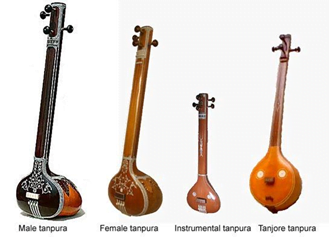History and Art and Culture
Context: Beleaguered tanpura makers get some support from the Indian Council for Cultural Relations. Traditional makers of classical Indian string instruments worry about the extinction of their art, with little interest among the younger generation, and most of their clientele now based abroad.
About Tanpura/Tambura:

- The tanpura, also referred to as tambura and tanpuri, is a long-necked plucked string musical instrument, originating in India.
- It does not play melody, but rather supports and sustains the melody of another instrument or singer.
- A tanpura is not played in rhythm with the soloist or percussionist.
- Hindustani musicians favour the term tanpura whereas Carnatic musicians say tambura.
- Tanpuras are designed in two different styles:
- Miraj style: This is the favourite form of tanpura for Hindustani performers.
- Tanjore style: This is a south Indian style of tambura, used widely by Carnatic performers.
About Indian Council for Cultural Relations:
- The Indian Council for Cultural Relations (ICCR), is an autonomous organisation of the Government of India.
- It is involved in India’s global cultural relations, through cultural exchange with other countries and their people.
- It was founded in 1950 by Maulana Abul Kalam Azad, the first Education Minister of independent India.
- Headquarter: New Delhi.
- The council also operates missions internationally, with established cultural centres in various countries.
- In addition to organising cultural festivals in India and overseas, the ICCR financially supports a number of cultural institutions across India, and sponsors individual performers in dance, music, photography, theatre, and the visual arts.
- It also administers the Jawaharlal Nehru Award for International Understanding, established in 1965, whose last award was in 2009.
Source: The Hindu














